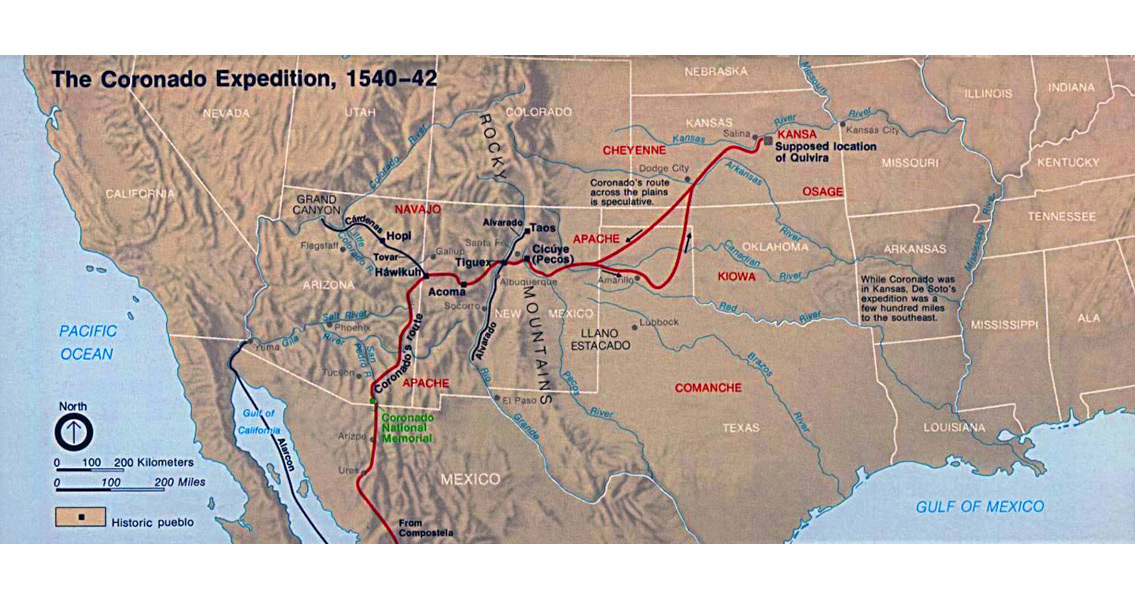<![CDATA[Francisco Vázquez de Coronado was a Spanish explorer whose expeditions allowed Europeans to set eyes on the Grand Canyon and other natural landmarks of the American West for the first time, yet he died poor, despondent and considered a failure; ruined by a desperate quest to find mythical cities of gold. The sixteenth century explorer was serving as governor of New Galicia, a province in what is today Mexico, when he heard stories of seven golden cities located along the coast of the Pacific Ocean to the north. Known as the Seven Golden Cities of Cibola, the treasure laden lands were said to contain entire streets paved with gold. At a time when huge swathes of North and South America were still unexplored by Europeans, such fantastical legends could often prove irresistible to the imaginations of the colonisers of the New World. In 1540, Coronado organised an ambitious expedition north to make a thorough exploration of what was the still largely uncharted west coast of North America. Coronado's team was huge, featuring over three hundred Spaniards, hundreds of indigenous Americans, and slaves, as well as horses and herds of sheep, pigs and cattle. The expedition would be split into two parts: over land and sea. While Coronado led the main force on land, two ships would simultaneously sail up along the coast. The expedition, which Coronado had invested huge sums in, set off in February 1540. It would go on to open up huge swathes of North America to colonists, and have a devastating effect on the native peoples living there. Coronado's forces, including a group of cavalry men, reached what they believed to be the first city of Cibola in June 1540. In reality, it was the Zuni Pueblo town of Hawikuh, in what is now New Mexico. The Spanish attempted to subdue the town. When the native inhabitants resisted they were met with the heavily armed cavalry, and forced to retreat from their homes. In July 1540, a small group from the expedition came across another Native American settlement, but quickly found that the indigenous tribe were not the inhabitants of the Seven Golden Cities of Cibola. A month later the two ships, under the command of Hernando de Alarcón, sailed up the Gulf of California to discover the mouth of the Colorado River. Another group from the expedition, led by García López de Cárdenas, progressed into what is today Arizona. They became the first Europeans to set eyes on the spectacular Grand Canyon. The various groups of the expedition reunited on the banks of the Rio Grande at Kuana and spent the winter there, enduring but ultimately surviving several battles with the indigenous populations inhabiting the area. Through the Spring of 1541 the explorers made their way through Kansas and Texas; each time they thought they were close to finding one of the gold paved cities they instead came across isolated Native American villages. By 1542 it was clear the expedition had failed. Coronado and his explorers returned to Mexico and reported their findings to Antonio de Mendoza, the Spanish viceroy. Coronado had invested and ultimately lost huge sums on his quest for the gold cities, while his reputation had been tarnished by the failure. He even faced accusations of incompetence in his leadership of the expeditions, but was ultimately cleared. Coronado died on the 22nd September, 1554, his body still carrying injuries and scars from his failed attempt to find the fabled Golden Cities of Cibola. He was the explorer who led the expeditions which laid European eyes on the Grand Canyon and the Colorado River for the first time. Coronado will always be remembered however, as the man who went searching for the Seven Golden Cities of Cibola and came back empty handed.]]>
The Explorer Who Found The Grand Canyon But Wanted Cities of Gold
